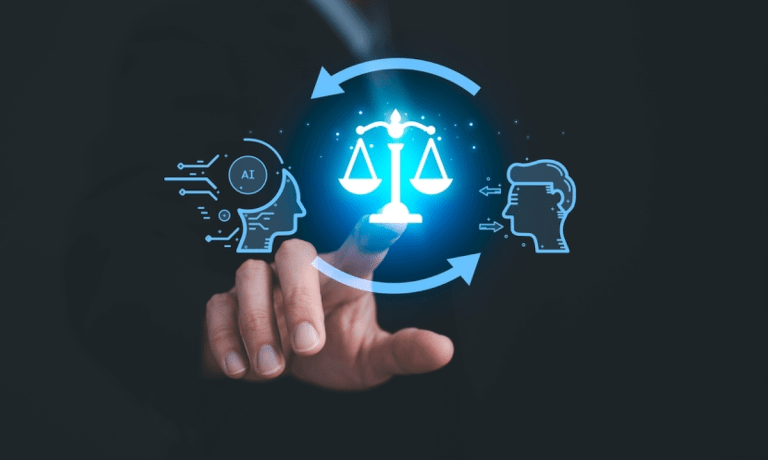
As artificial intelligence systems grow increasingly powerful and ubiquitous, a critical challenge has emerged: ensuring these systems behave in beneficial ways that align with human values. This challenge, known as “AI alignment,” has become a focal point for researchers, tech companies and policymakers grappling with the far-reaching implications of advanced AI.
At its core, AI alignment seeks to create AI systems that reliably pursue the objectives we want them to pursue rather than misinterpreting instructions or optimizing for unintended goals. The stakes are high — a misaligned AI system could cause significant harm if deployed in critical domains like healthcare, finance or national security.
Consider the case of content recommendation algorithms used by social media platforms. While ostensibly designed to increase user engagement, these systems have been criticized for amplifying misinformation and polarizing content, potentially undermining democratic discourse and social cohesion. This unintended consequence exemplifies the alignment problem on a relatively small scale.
As AI capabilities advance rapidly, the potential for misalignment grows more acute. For instance, OpenAI’s GPT language models have demonstrated remarkable natural language processing and generation abilities. The latest iteration, GPT-4, can engage in human-like dialogue, write code and even pass professional-level exams. However, researchers have found that these models can sometimes produce biased, false, or harmful content if not carefully constrained.
The stakes of AI alignment for the business world are rapidly coming into focus. With companies across sectors racing to integrate AI into core operations, experts warn that poorly aligned AI systems could wreak havoc on bottom lines and consumer trust. Recent incidents have highlighted these risks, from AI-powered chatbots leaking sensitive customer data to facial recognition systems showing racial bias.
One approach to alignment involves “inverse reinforcement learning,” where AI systems attempt to infer human preferences by observing human behavior. Alphabet-owned AI research company DeepMind has explored this technique in its “Recursive Reward Modeling” framework. The idea is to create AI systems that can learn and adapt to human values over time rather than rigidly following preprogrammed rules.
Another promising avenue is “debate” systems, where multiple AI agents argue different sides of a question, with a human judge determining the winner. This approach, pioneered by researchers at OpenAI, aims to leverage the adversarial process to uncover potential flaws or unintended consequences in AI reasoning. The hope is this process can surface issues that might not be apparent to humans or individual AI systems alone.
Anthropic, an AI safety startup founded by former OpenAI researchers, has developed “constitutional AI” techniques to imbue AI systems with explicit ethical principles and constraints. Their approach involves training language models to internalize and reason about ethical guidelines, potentially creating more robust guardrails against misalignment. This method has shown promise in early experiments, with AI models demonstrating improved adherence to specified ethical principles.
The commercial implications of AI alignment are significant and far-reaching. Companies demonstrating reliable alignment may gain a competitive edge as AI systems are increasingly deployed in high-stakes domains.
In the financial sector, for example,AI-driven trading algorithms that reliably optimize for long-term stability and compliance with regulations could outperform less aligned systems that might inadvertently create market instabilities or violate regulatory requirements.
Similarly, AI systems used for diagnosis and treatment recommendations in healthcare must be carefully aligned to prioritize patient outcomes above all else. Misaligned systems could optimize for metrics like cost reduction or treatment volume at the expense of patient health, creating ethical and liability issues for healthcare providers. IBM’s Watson Health division has faced challenges in this area, with reports of its AI recommending unsafe cancer treatments, highlighting the critical importance of alignment in medical AI.
The autonomous vehicle industry provides another clear example of the importance of alignment. Self-driving cars must navigate complex ethical trade-offs in potential accident scenarios, balancing passenger safety with the well-being of pedestrians and other road users. Companies demonstrating robust alignment in these scenarios may gain greater public trust and regulatory approval. Waymo, Cruise and Tesla grapple with these alignment challenges as they develop autonomous driving technologies.
Major tech companies are investing heavily in alignment research, recognizing both the ethical imperative and the business opportunity. Microsoft has partnered with OpenAI to develop advanced language models with improved safety and alignment properties, committing billions of dollars to the effort. Google’s DeepMind has established a dedicated “Technical AI Safety” team focused on alignment challenges, led by prominent researchers in the field.
The European Union’s AI Act includes provisions related to transparency and human oversight of high-risk AI systems, which can be seen as alignment-adjacent concerns. The act would require companies deploying AI in critical sectors to demonstrate that their systems are safe, transparent and aligned with European values.
The pursuit of AI alignment represents a crucial inflection point in the development of artificial intelligence. As AI systems become more capable and autonomous, the potential consequences of misalignment grow exponentially. The challenge lies not just in technical implementation but in the fundamental difficulty of specifying human values and preferences in a way that can be reliably understood and pursued by AI systems.
This challenge is compounded by the rapid pace of AI advancement, which threatens to outstrip our ability to develop robust alignment techniques. The recent breakthroughs in large language models and multimodal AI systems have demonstrated capabilities that were thought to be years or decades away, catching many researchers and policymakers off guard.
Understanding the alignment landscape will be crucial for businesses and investors. Companies that successfully navigate AI alignment’s technical and ethical challenges may find themselves well-positioned in an AI-driven future. In contrast, those who neglect alignment concerns could face significant risks and liabilities. Venture capital firms are increasingly factoring alignment considerations into their investment decisions, recognizing that long-term success in AI will depend on creating systems that are not just powerful but reliably beneficial.
For all PYMNTS AI coverage, subscribe to the daily AI Newsletter.